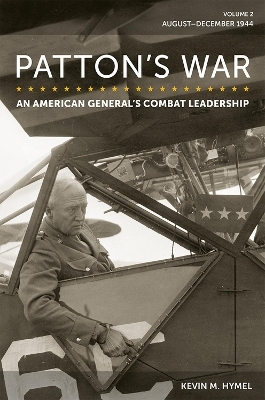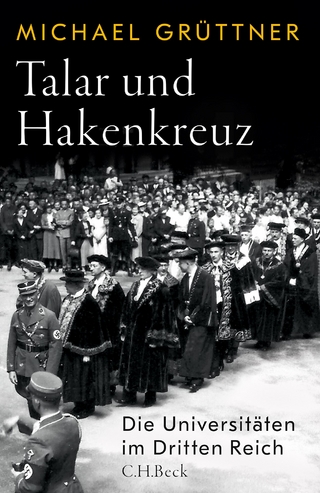
Patton's War, Volume 2
An American General's Combat Leadership: August–December 1944
Seiten
2023
University of Missouri Press (Verlag)
978-0-8262-2278-7 (ISBN)
University of Missouri Press (Verlag)
978-0-8262-2278-7 (ISBN)
This second of three volumes of Patton’s War examines General George S. Patton’s leadership of the US Third Army. The book follows Patton’s contributions to both the Normandy and Brittainy campaigns; the closing of the Falaise Pocket in Normandy, and racing to the port cities in Brittainy.
This second of three volumes of Patton’s Warpicks up where the first one left off, examining General George S. Patton’s leadership of the U.S. Third Army. The book follows Patton’s contributions to both the Normandy and Brittainy campaigns; the closing of the Falaise Pocket in Normandy, and racing to the port cities in Brittainy. With the Pocket closed, Patton led his army to Nancy and Metz along the Moselle River, where he quickly captured the former and laid siege to the latter, forcing its surrender after three months of heavy combat. Now Patton planned for a war-winning campaign, interrupted by Hitler’s last, desperate attempt to win the war, the Battle of the Bulge. After some delays, Patton turned two of his corps north and attacked the southern flank of the Bulge, rescuing the besieged town of Bastogne.
As he did in the preceding volume, in Volume 2 Hymel relies not only on Patton’s diaries and letters, but countless veteran interviews, as well as veteran surveys and veteran memoirs to offer the most complete picture to date of Patton in World War II. Volume 2 also provides a unique insight missed by previous Patton authors. Instead of using Patton’s transcribed diaries, which were heavily embellished, Hymel consults Patton’s original, hand-written diaries to get the true story of how Patton felt and what he thought about people and events. Among the history-changing revelations gleaned from the original diaries is that Patton never predicted the Battle of the Bulge (his wife added his prediction of it in November 1944) and even tried to avoid being sucked into the last major campaign of the war.
The book also reveals General George C. Marshall’s influence on the European Theater of Operations; Operation Tink, the bombing campaign intended to break Patton out of the Saar region and help him reach the Rhine River, which had to be shelved due to the Bulge; and a thorough retelling of the Verdun meeting between Eisenhower, Bradley, Patton, and Devers, as they planned how to fight the Battle of the Bulge.
Lastly, the book shows Patton at the height of his generalship, successfully leading his army into combat without the same types of mistakes and caustic behavior that almost got him sent home earlier. This is a Patton who takes risks because he understands his troops and the enemy, who visits PTSD wounded in the hospitals, who is constantly trying to motivate his men, and who is the continual student of war, always yearning to understand more. Unfortunately, this is also the Patton still guided by his racism and antisemitism.
This second of three volumes of Patton’s Warpicks up where the first one left off, examining General George S. Patton’s leadership of the U.S. Third Army. The book follows Patton’s contributions to both the Normandy and Brittainy campaigns; the closing of the Falaise Pocket in Normandy, and racing to the port cities in Brittainy. With the Pocket closed, Patton led his army to Nancy and Metz along the Moselle River, where he quickly captured the former and laid siege to the latter, forcing its surrender after three months of heavy combat. Now Patton planned for a war-winning campaign, interrupted by Hitler’s last, desperate attempt to win the war, the Battle of the Bulge. After some delays, Patton turned two of his corps north and attacked the southern flank of the Bulge, rescuing the besieged town of Bastogne.
As he did in the preceding volume, in Volume 2 Hymel relies not only on Patton’s diaries and letters, but countless veteran interviews, as well as veteran surveys and veteran memoirs to offer the most complete picture to date of Patton in World War II. Volume 2 also provides a unique insight missed by previous Patton authors. Instead of using Patton’s transcribed diaries, which were heavily embellished, Hymel consults Patton’s original, hand-written diaries to get the true story of how Patton felt and what he thought about people and events. Among the history-changing revelations gleaned from the original diaries is that Patton never predicted the Battle of the Bulge (his wife added his prediction of it in November 1944) and even tried to avoid being sucked into the last major campaign of the war.
The book also reveals General George C. Marshall’s influence on the European Theater of Operations; Operation Tink, the bombing campaign intended to break Patton out of the Saar region and help him reach the Rhine River, which had to be shelved due to the Bulge; and a thorough retelling of the Verdun meeting between Eisenhower, Bradley, Patton, and Devers, as they planned how to fight the Battle of the Bulge.
Lastly, the book shows Patton at the height of his generalship, successfully leading his army into combat without the same types of mistakes and caustic behavior that almost got him sent home earlier. This is a Patton who takes risks because he understands his troops and the enemy, who visits PTSD wounded in the hospitals, who is constantly trying to motivate his men, and who is the continual student of war, always yearning to understand more. Unfortunately, this is also the Patton still guided by his racism and antisemitism.
Kevin M. Hymel (pronounced Heemel) is a contract historian at Arlington National Cemetery and a Historian/Tour Guide of Ambrose Historical Tours, leading the “In Patton’s Footsteps” tour. For fifteen years he was the research director of and regular contributor to WWII History and WWII Quarterly. He is the author of four books, including Patton’s Photographs: War as He Saw It. His article “Fighting a Two-Front War,” in WWII History is being made into the Netflix movie “6888,” written and directed by Tyler Perry. Mr. Hymel served as a technical advisor to the film.
| Erscheinungsdatum | 17.04.2023 |
|---|---|
| Reihe/Serie | American Military Experience |
| Zusatzinfo | 47 b&w illus, 11 maps |
| Verlagsort | Missouri |
| Sprache | englisch |
| Maße | 151 x 228 mm |
| Gewicht | 816 g |
| Themenwelt | Literatur ► Biografien / Erfahrungsberichte |
| Sachbuch/Ratgeber ► Geschichte / Politik | |
| Geschichte ► Allgemeine Geschichte ► 1918 bis 1945 | |
| Geschichte ► Teilgebiete der Geschichte ► Militärgeschichte | |
| Sozialwissenschaften ► Politik / Verwaltung | |
| ISBN-10 | 0-8262-2278-1 / 0826222781 |
| ISBN-13 | 978-0-8262-2278-7 / 9780826222787 |
| Zustand | Neuware |
| Haben Sie eine Frage zum Produkt? |
Mehr entdecken
aus dem Bereich
aus dem Bereich
die Universitäten im Dritten Reich
Buch | Hardcover (2024)
C.H.Beck (Verlag)
CHF 61,60
ein Psychologe erlebt das Konzentrationslager
Buch | Hardcover (2024)
Kösel (Verlag)
CHF 30,80


